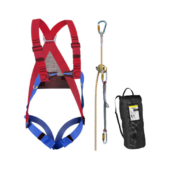Companies in expansion phase often use many providers to satisfy their demands. There is no ideal quantity or type of supplier partnerships, but how you add new partners can drastically impact the experience. Supplier onboarding done well may save money, minimise risk, and improve buyer-vendor relations.
This article covers all you need to know about reliable, complete supplier onboarding. You’ll learn how to choose the best suppliers, develop a well-defined supplier onboarding process, and use technology to boost business results.
Defining vendor onboarding process
Supplier onboarding evaluates and brings vendors online for ordering. The finance or procurement team investigates potential vendors, assesses their risk, and integrates them into the procurement process or purchasing platform during supplier onboarding. This ensures exceptional service and a strong vendor connection throughout the contract.
General supplier onboarding includes:
- Finding vendors for a certain need
- Price, conditions, and compliance evaluation of potential suppliers
- Doing due diligence and risk evaluations
- Registering successful vendors for future orders
Onboarding new suppliers that fulfil the company’s product and service quality standards, delivery schedules, cost-effectiveness measures, and ethical standards is the goal.
Effective supplier onboarding reduces procurement costs and third-party risk. Companies can strengthen supplier relationships, improve communication, negotiate better, and improve procurement performance. It also keeps organisations competitive and adaptive in a fast-changing industry.
What complicates supplier onboarding?
Many things can prevent you from hiring and working with good vendors. Insufficient supplier data visibility and communication cause most problems.
These five supplier onboarding difficulties are common for companies that struggle.
No vendor requirements
Vendor evaluation is difficult without clear expectations. Without clear rules and requirements for new vendors, teams may choose suppliers that cause delays, deliver low-quality products, or offer services that don’t meet organisational demands. Lack of vendor criteria can strain supplier relationships, complicate discussions, and make it hard to reach mutually advantageous agreements.
Supplier data gaps
New vendors are hard to integrate into systems and workflows due to scattered supplier data. Teams struggle to assess a supplier’s suitability for company operations without complete data.
Lack of information delays supplier onboarding because account info, contracts, and quality questionnaires must be gathered. Incomplete supplier profiles might impair risk assessment and cause compliance concerns.
Offline vendor ordering
Many vendors use online systems, procurement platforms, and digital markets, but not all. Some work from email, phone, or faxed purchase orders. Manual ordering slows transactions and increases data entry errors.
Offline ordering makes tracking and managing orders harder because financial reporting doesn’t reflect adjustments without the necessary tools. Buyers avoid offline providers or generating out-of-policy exclusions since these processes are not automated.
Poor order visibility
Businesses struggle to evaluate vendors without a complete procurement process picture. This may add redundancy to procurement, especially if multiple sites order goods separately.
Decreased visibility and redundant ordering give organisations less negotiation power since they lack order volume, term, and pricing data. Teams often have too many vendors, increasing vendor management and cash inefficiency.
Bad AP process management
After supplier onboarding, a new vendor relationship begins. Fragmented AP processes can strain new supplier relationships. Manual AP processes delay vendor payments, billing, backorders, and product delivery.
Effective supplier onboarding steps
Without a defined supplier onboarding process for new suppliers, creating a safe, centralised one is easy. Use these measures for every new vendor to ensure high-quality service and long-term connections.
1. Create a procurement policy: Strong supplier onboarding requires a policy. It clarifies vendor management and relationships. For different roles and departments, procurement policies describe objectives, methods, ethical standards, and expenditure guidelines. They guarantee uniformity and openness in buying.
2. Set supplier requirements: Clear supplier expectations minimise service quality and risk. List these standards to ensure the firm chooses suitable suppliers.
Every vendor relationship should be defined by requirements, including:
- Quality standards
- Delivery dates
- Terms of payment
- Agreements on service levels
These needs must be communicated early to minimise confusion. Specify ISO certifications or sustainability standards for suppliers. Setting expectations for new vendors starts with a supplier onboarding checklist or security questionnaire.
3. Review suppliers: Due diligence helps organisations find flaws that would disqualify a provider. The supplier’s financial soundness, market reputation, operational capabilities, and industry standards are assessed during due diligence. References, performance records, and site visits may be required.
Careful vendor evaluation and approval reduces supplier performance risks. Over 40% of firms had significant third-party security breaches last year, making this crucial. Due diligence ensures firms work with partners who improve supply chain integrity and efficiency.
4. Negotiate and sign the contract: After choosing a vendor, a business must negotiate cost, delivery, quality, payment terms, and confidentiality. Effective negotiation clarifies roles, duties, and noncompliance penalties. This process requires clarity, adaptability, and an emphasis on long-term relationship.
5. Collect supplier information: After signing with a vendor, a business must collect primary and secondary contact points, email addresses, phone numbers, and office addresses. Direct integration, vendor portals, and APIs can acquire certain data, but some vendors still use purchase orders, emails, and other methods. To track cost, a company must record these and automate vendor management and payment.
Companies will want contact information and payment information like bank account details or preferred payment methods. The system needs correct data to communicate and transact. Fast payment lets organisations take advantage of early payment discounts.
6. Centralise order information: Once a business starts ordering from a new vendor, it requires a central location to track pending and completed orders. Centralising this information streamlines order tracking, reporting accuracy, supply chain management, and spend analysis. Data aggregation helps organisations track orders, provide meaningful reports, and analyse expenditure patterns for improved financial management.
7. Establish vendor performance reviews: Supplier onboarding is the ideal time to monitor performance. Buyers that systematically assess and monitor vendor quality, reliability, and performance have fewer issues and better supplier relationships.
Onboarding is also a good time to set measurements and KPIs to evaluate vendor performance against expectations. Schedule regular reviews to identify concerns, improve, and strengthen collaborations.
Technology to streamline supplier onboarding
Supplier onboarding can be simplified and faster with technology. Supplier onboarding software automates tasks like:
- Obtaining documents
- Starting assessments
- Setting up vendor payments
- Reviewing vendor performance
- Managing spending
Digital platforms streamline business-supplier communication, ensuring deadlines are met. A procurement management system like Order.co helps purchasers with vendor delays and out-of-stocks. A procurement platform lets buyers easily find a similar item from another vendor while retaining key sourcing partnerships.
A centralised platform simplifies invoice routing, approval, reconciliation, and payment. Businesses can efficiently assess supplier performance and keep vendors compliant and competitive with all data in one place.

















